Air, Fuel and Heat
The importance of having all your materials ready can not be stressed too much.
Making spark, ember, flame and fire takes skill and understanding.
It is easy to lose the fire at any step. Learning to handle these steps is the skill
and it takes practice to acquire the skill.
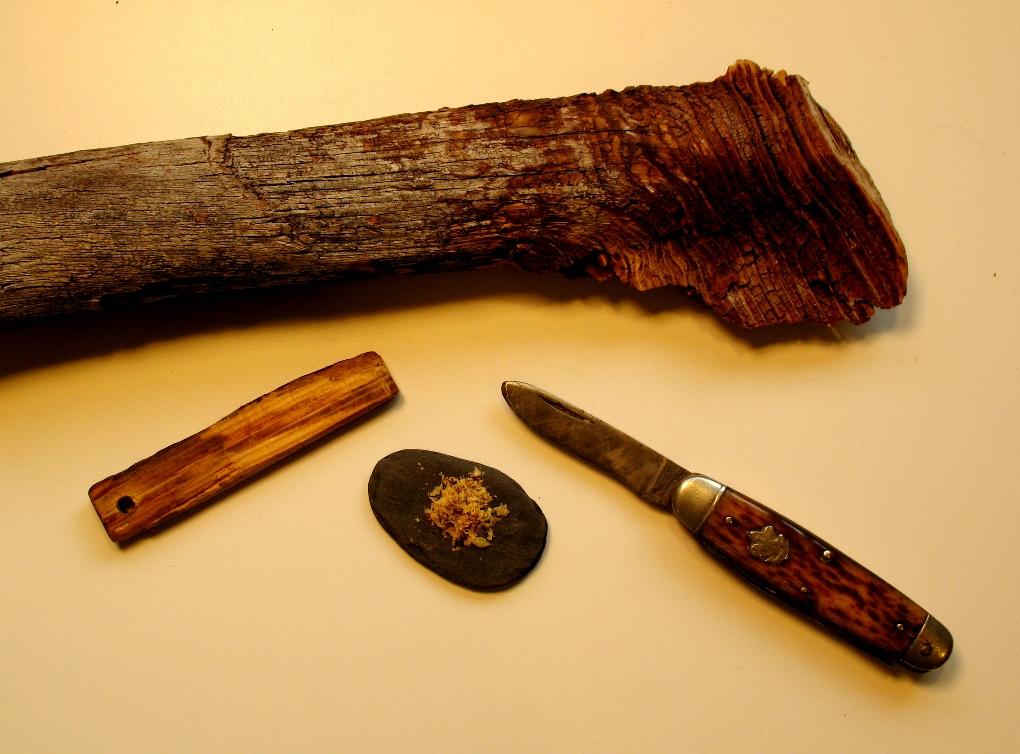
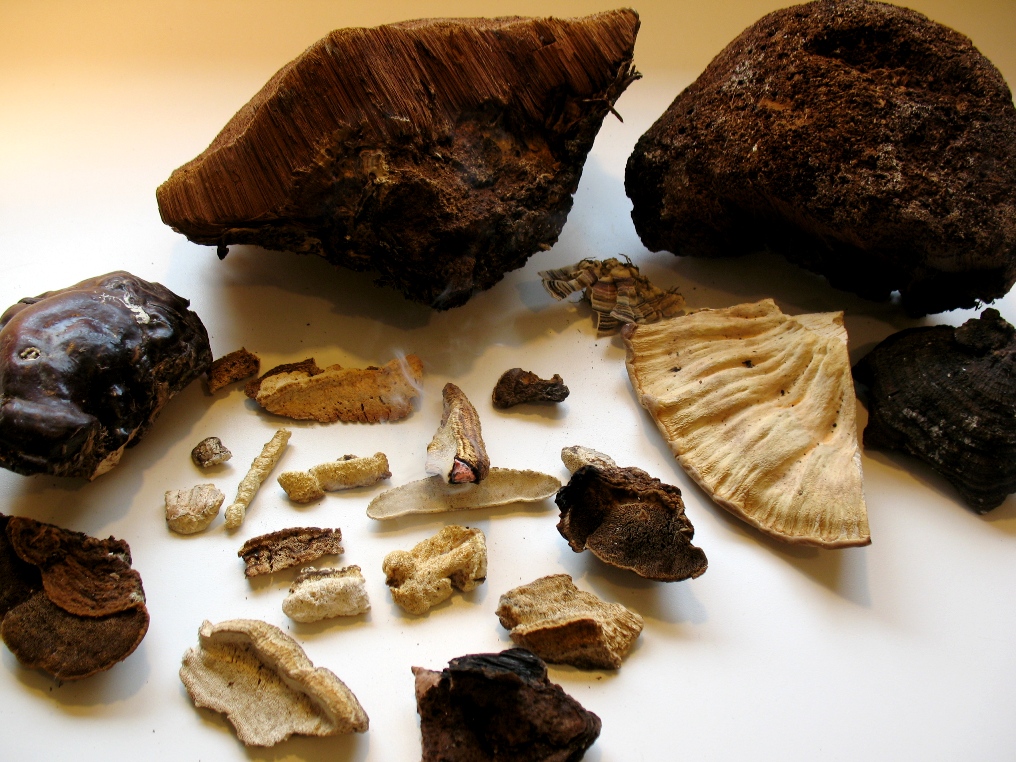
Pitchwood or Fatwood Polypore Fungus
Materials that take spark: Carbon cloth, Polypore, fatwood dust, charcoal.
These materials become flame or larger embers.
Take embers to flame and flame to durable flame.
Durable flame should be made with special tinder.
Flint and Steel
High carbon steel and a hard stone like flint.
The sharp edge of the flint knocks off a piece of steel. The small piece
of steel is very hot from the force of being dislodged.
It must fall on something combustible. Carbon cloth is first choice.
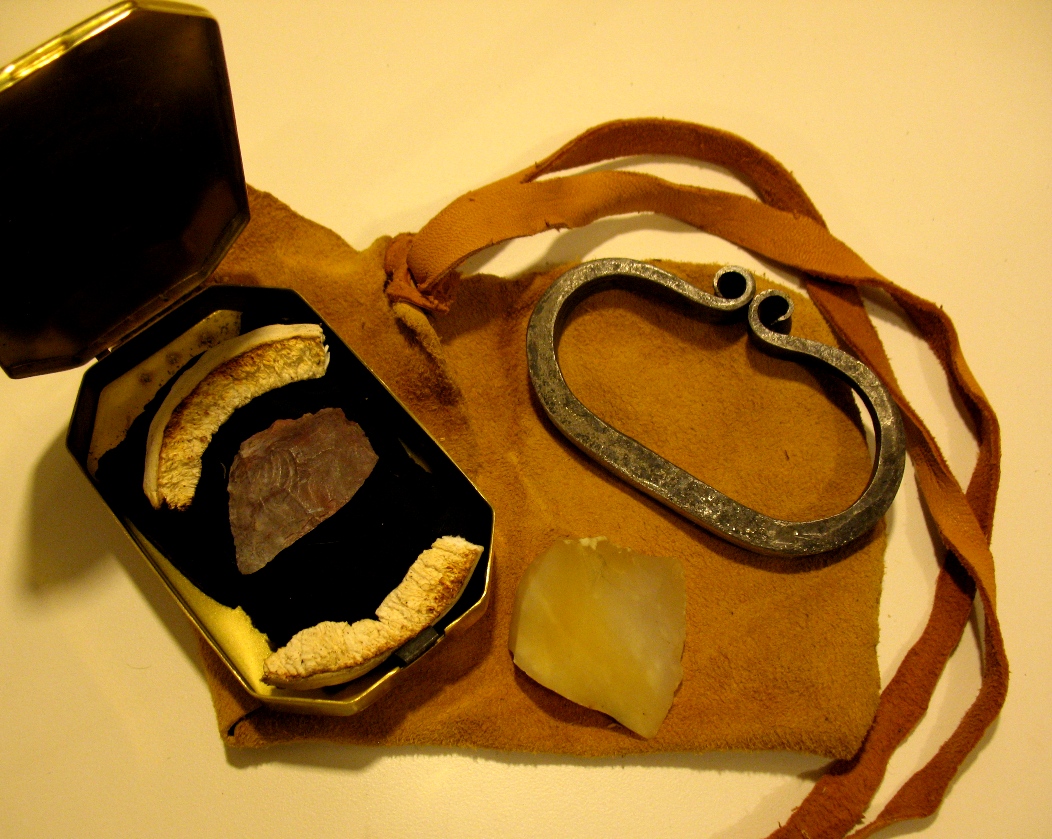
How to make carbon cloth. Place some 100% cotton cloth into a close fitting can.
A Band-Aid Box will work. Place into a fire and let the cloth combust. When the gasses
stop burning (see the flame from the hole in the can) remove and inside you will
have carbon cloth. This cloth will take the spark.
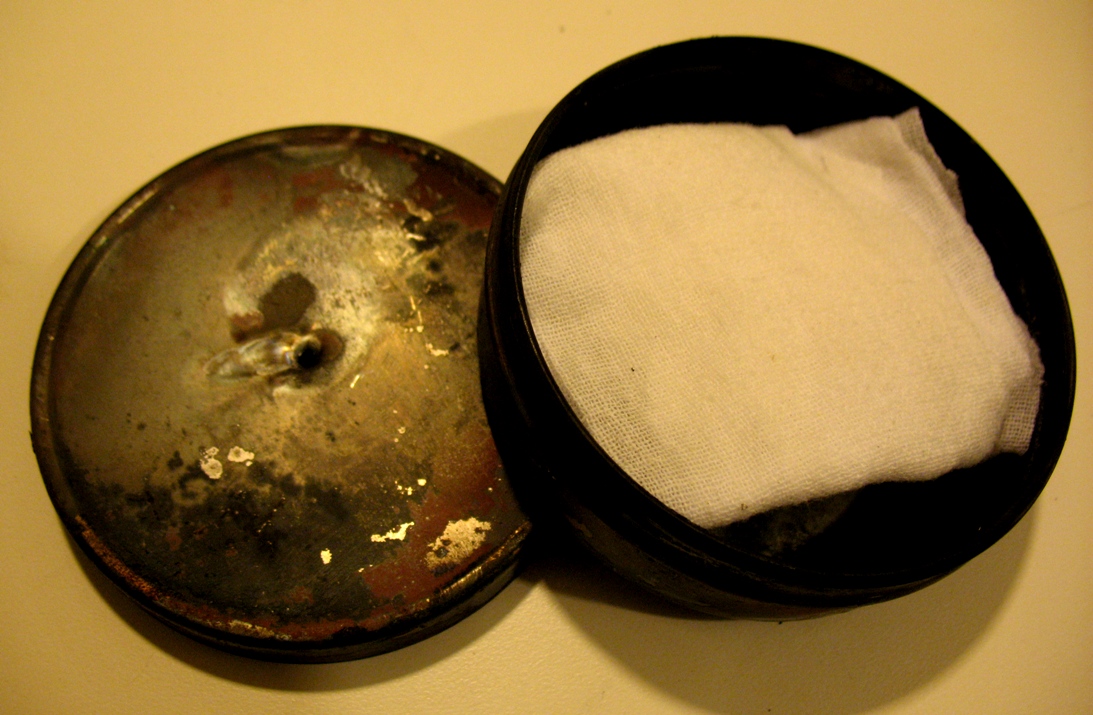
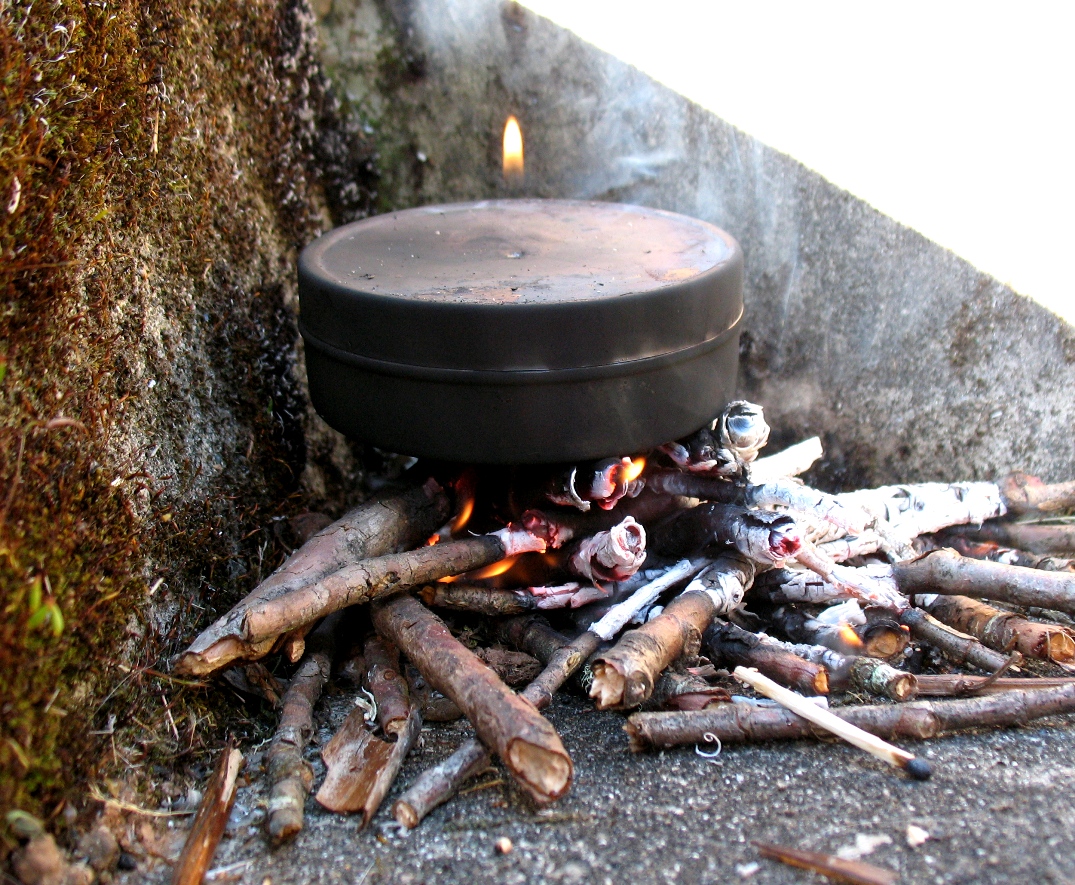
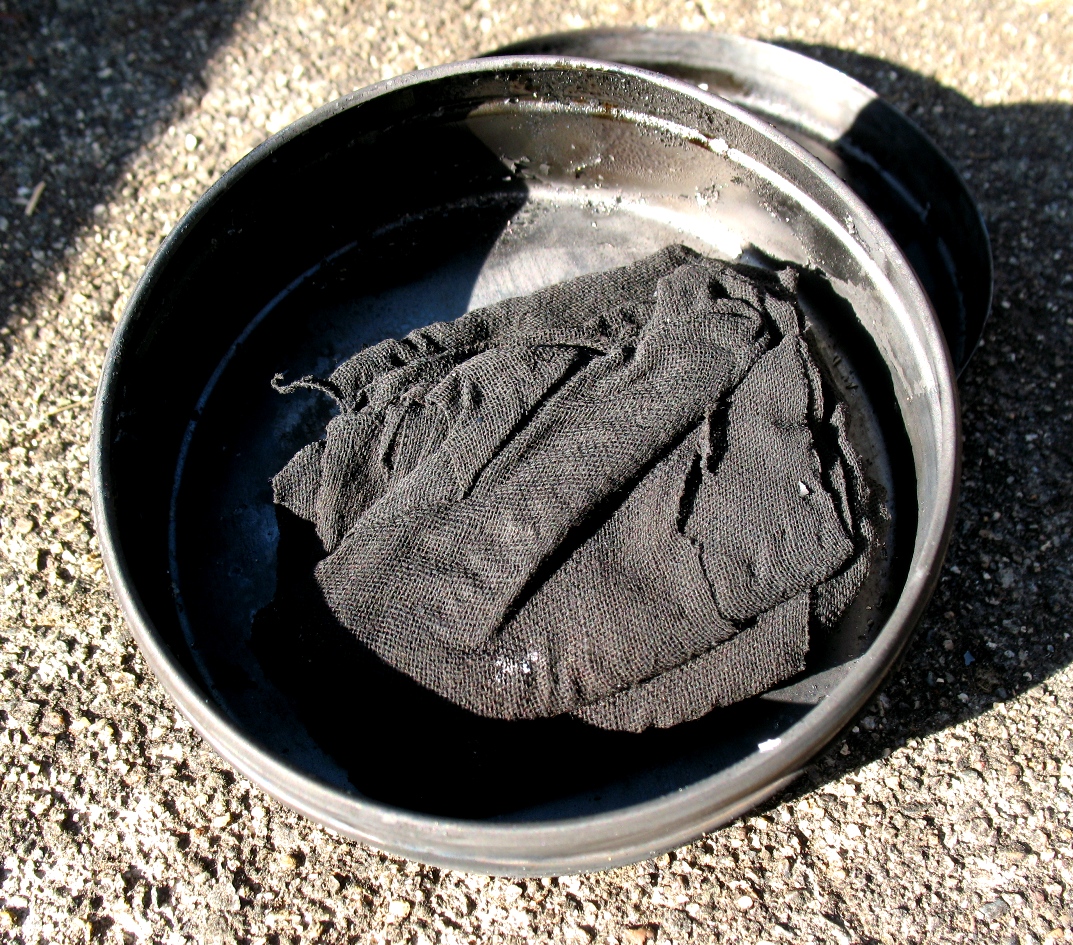
Hold the flint in your left hand. Place carbon cloth on top of flint. Strike down on the
flint with the steel and shave a off a piece of metal. The sparks will jump up onto the carbon cloth.
These sparks are colder than the sparks from a modern fire steel.
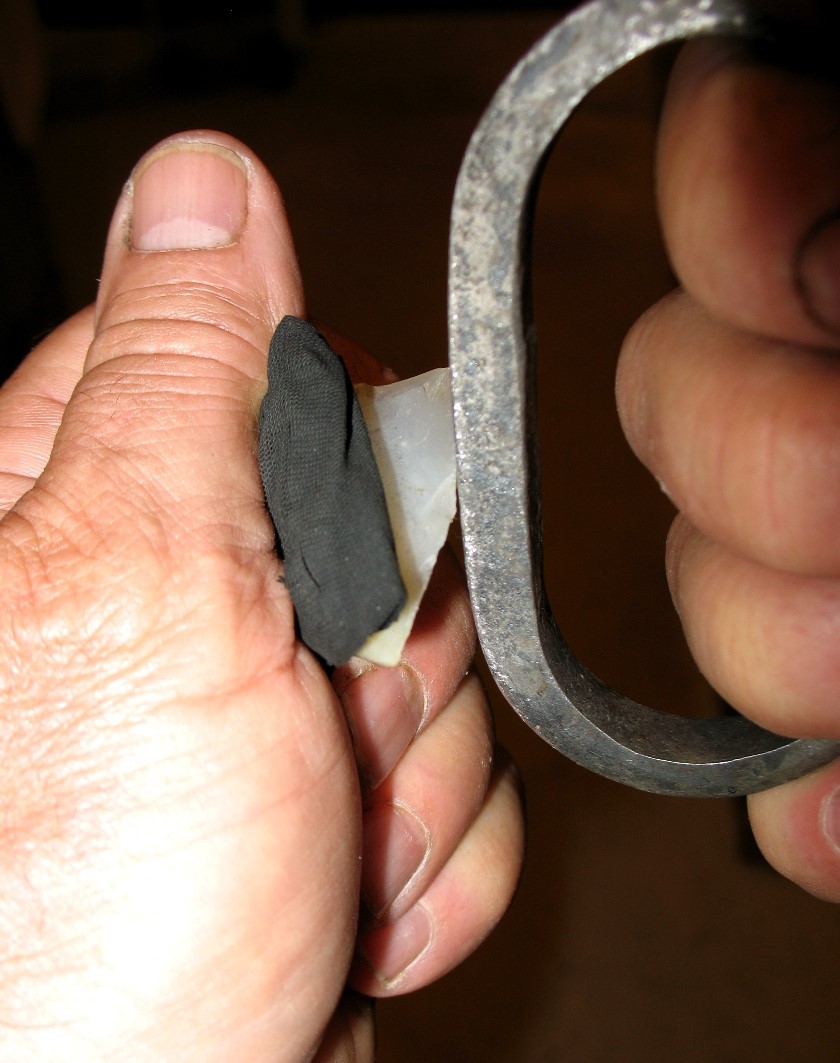
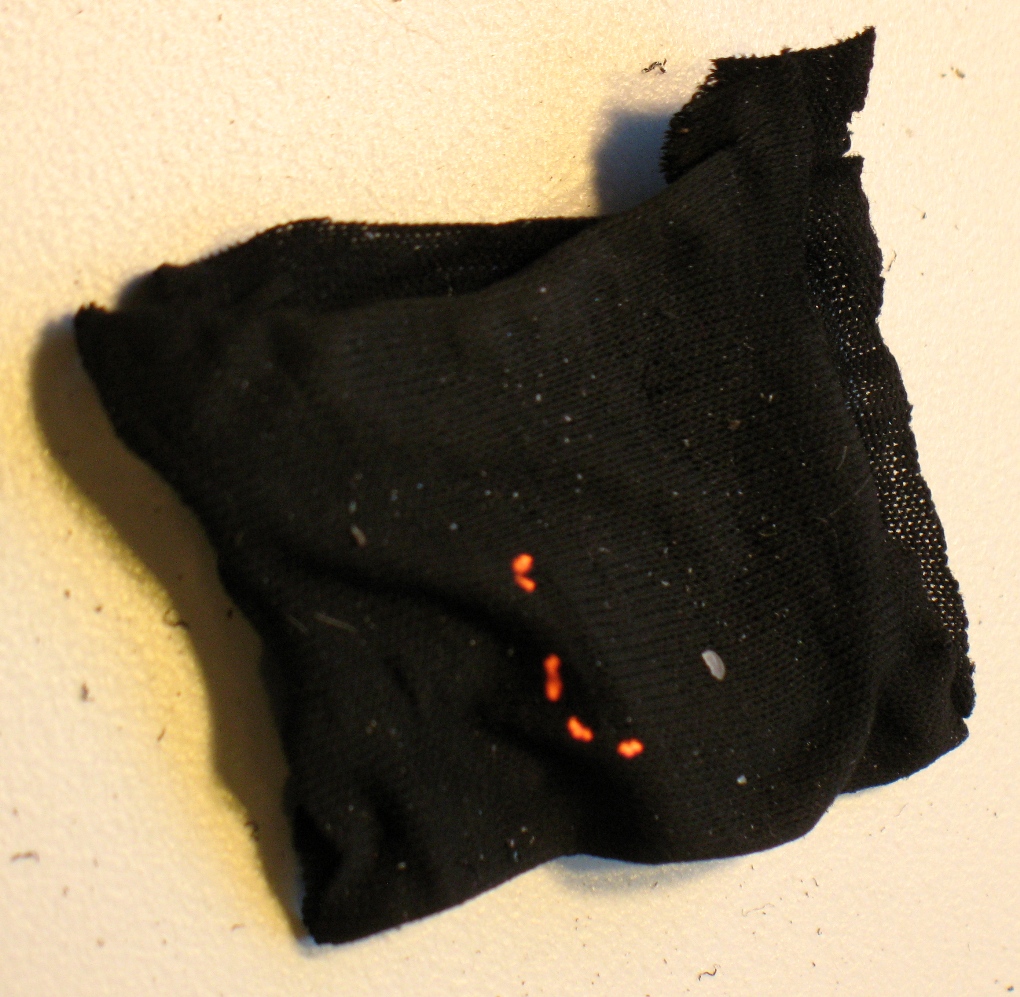
The carbon cloth will glow, notice the chards of flint. Now blow on it and ignite a
polypore or tinder bundle with the cloth.
Polypore Fungus or cedar bark and other materials can be used,
with more difficulty.
Magnifying Glass
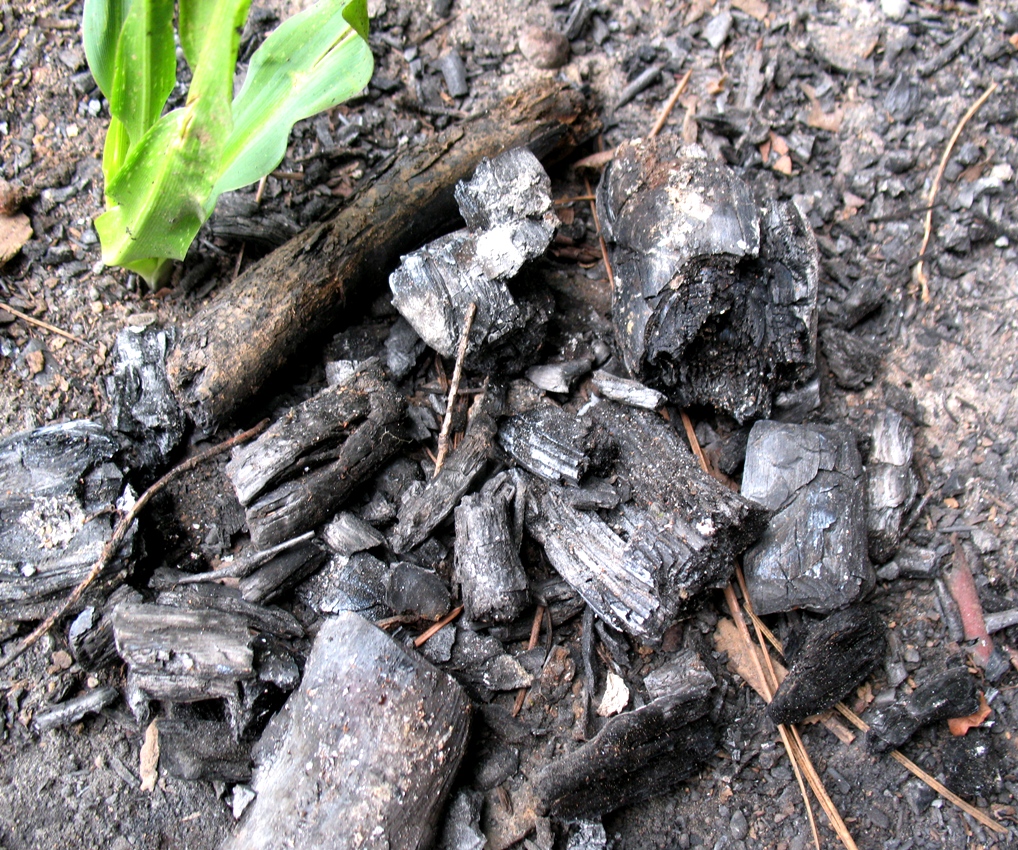
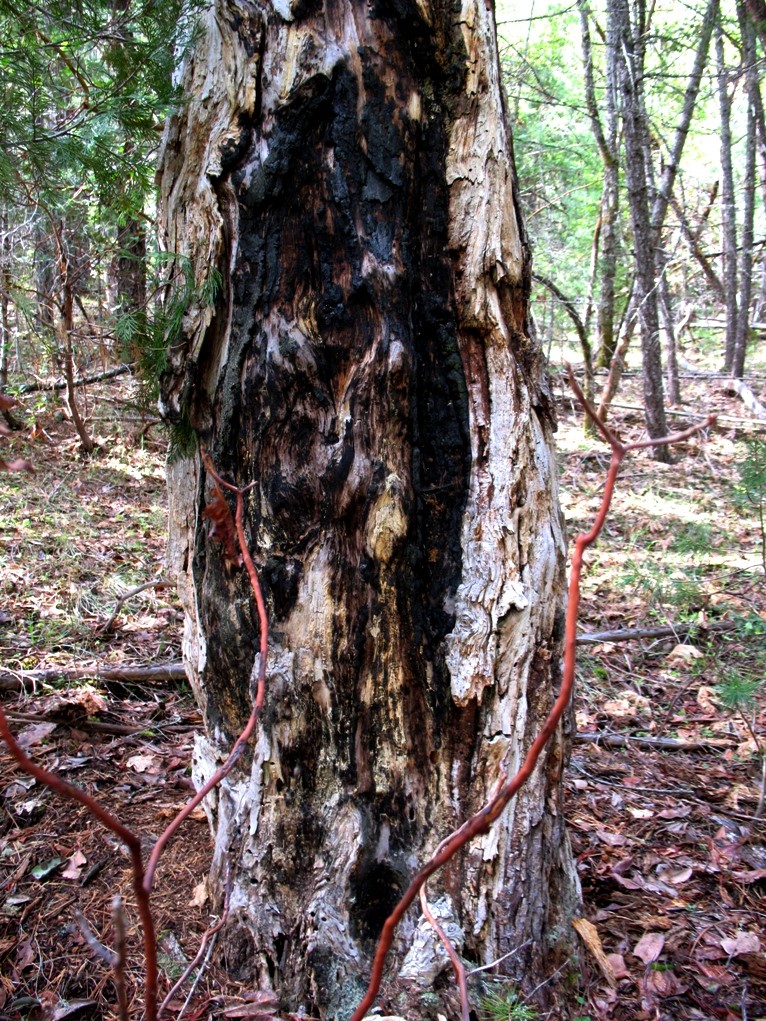
Old campfire Burnt Tree
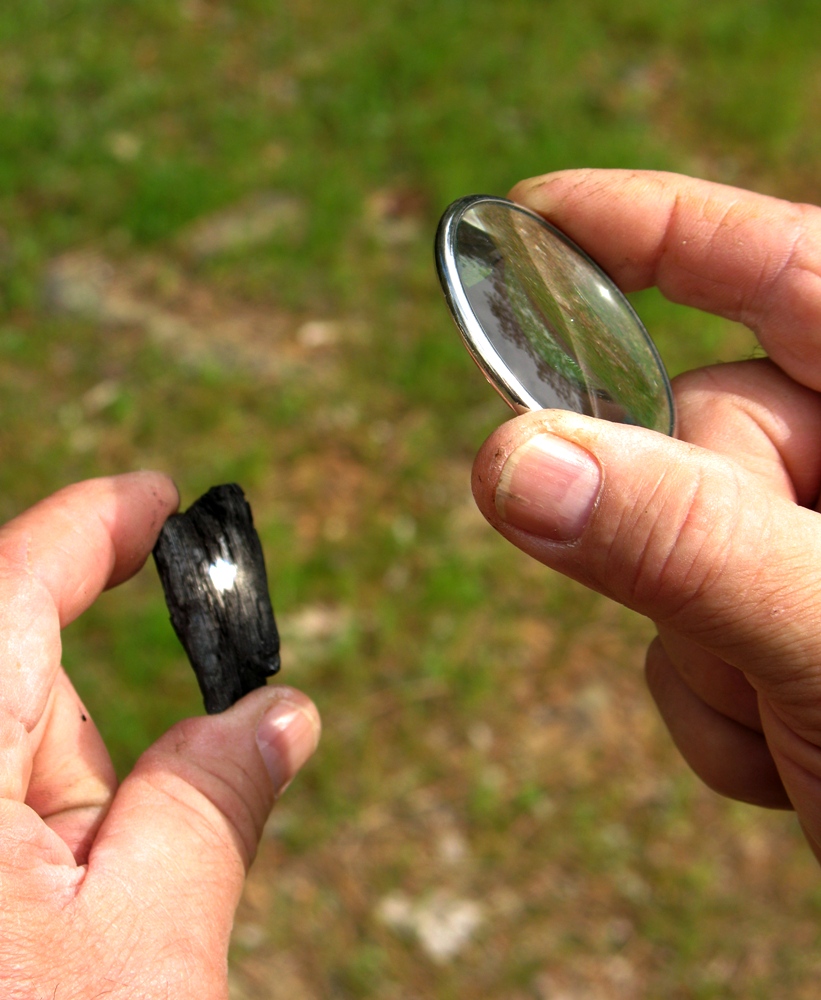
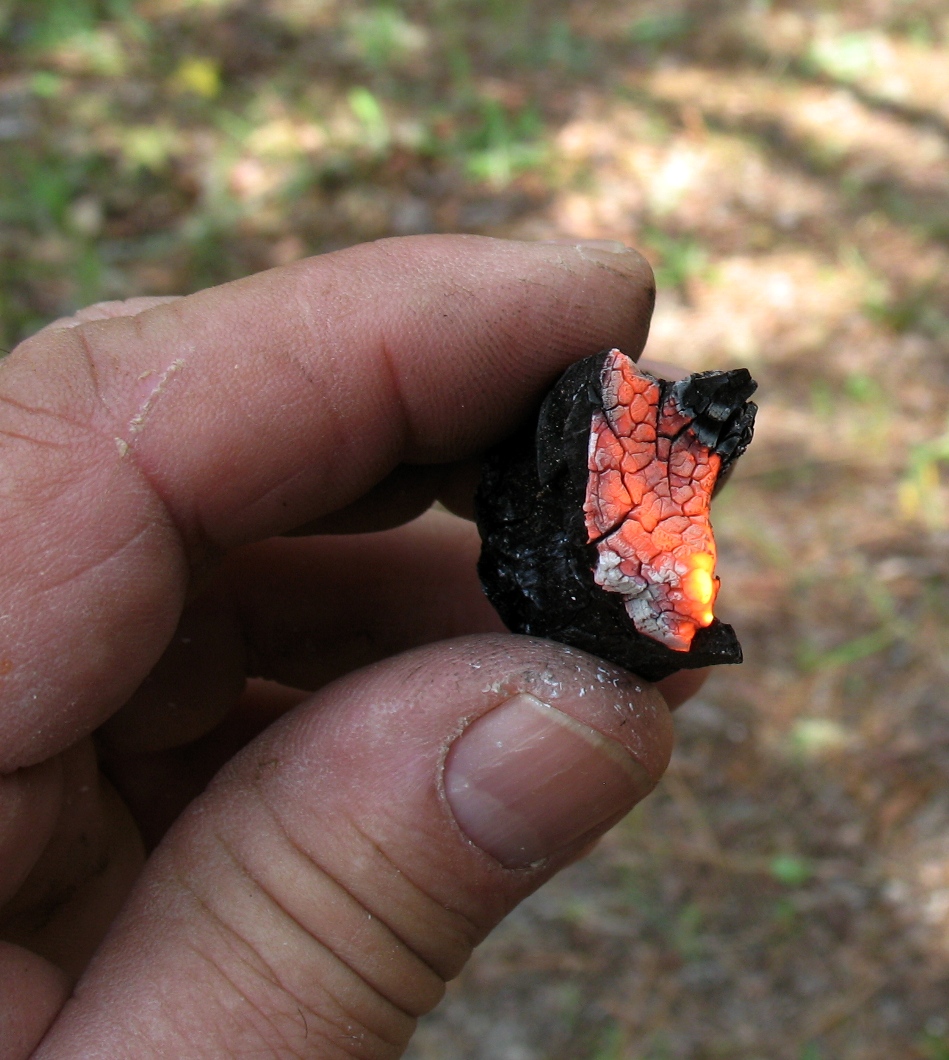
Charcoal or Polypore will make your fire starting with a magnifying glass much easier.
Charcoal can be had from an old campfire or a burnt tree. Polypore fungus is also easy
to find. It is much easier to ignite the charcoal or polypore and then set the tinder aglow.
Bow and Drill
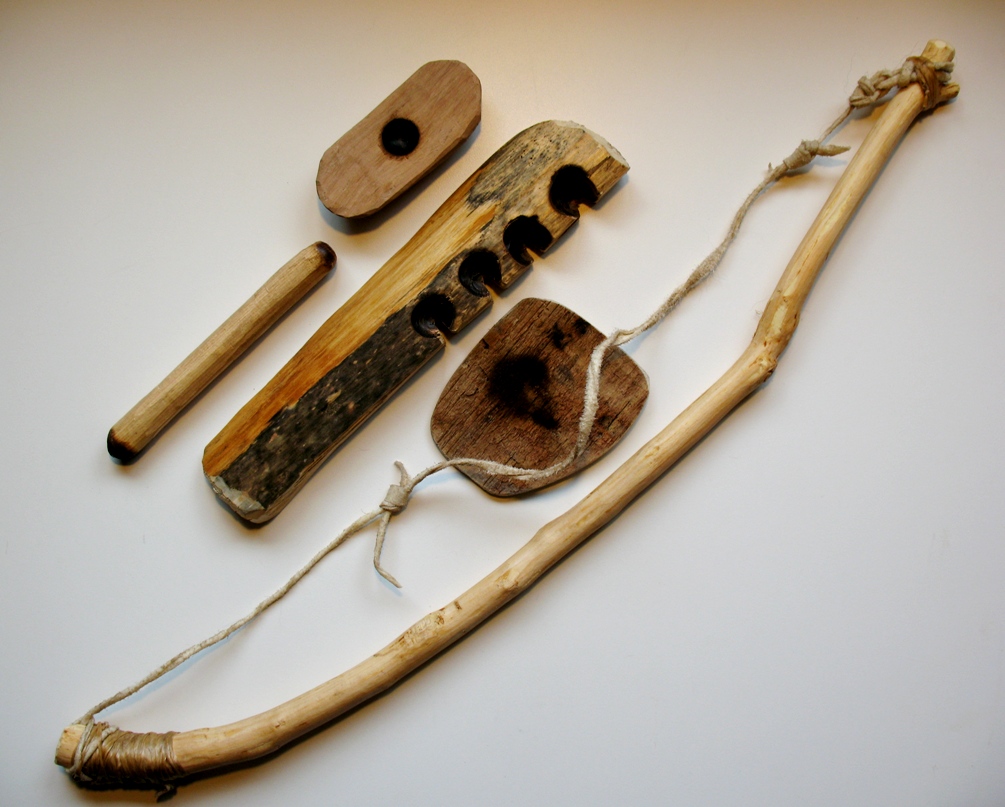
These are the parts for Fire by Bow and Drill.
They are Pivot block for drill, drill, fire board, fire catch board and the bow.
The pictured fire board and drill are made from cedar. This method is a good one to know,
it will work well when the user understands the variables. Materials of each part
are an important aspect of this technique. Understanding what is happening is important,
knowing that the char gets hotter after you stop spinning the drill is a key point.
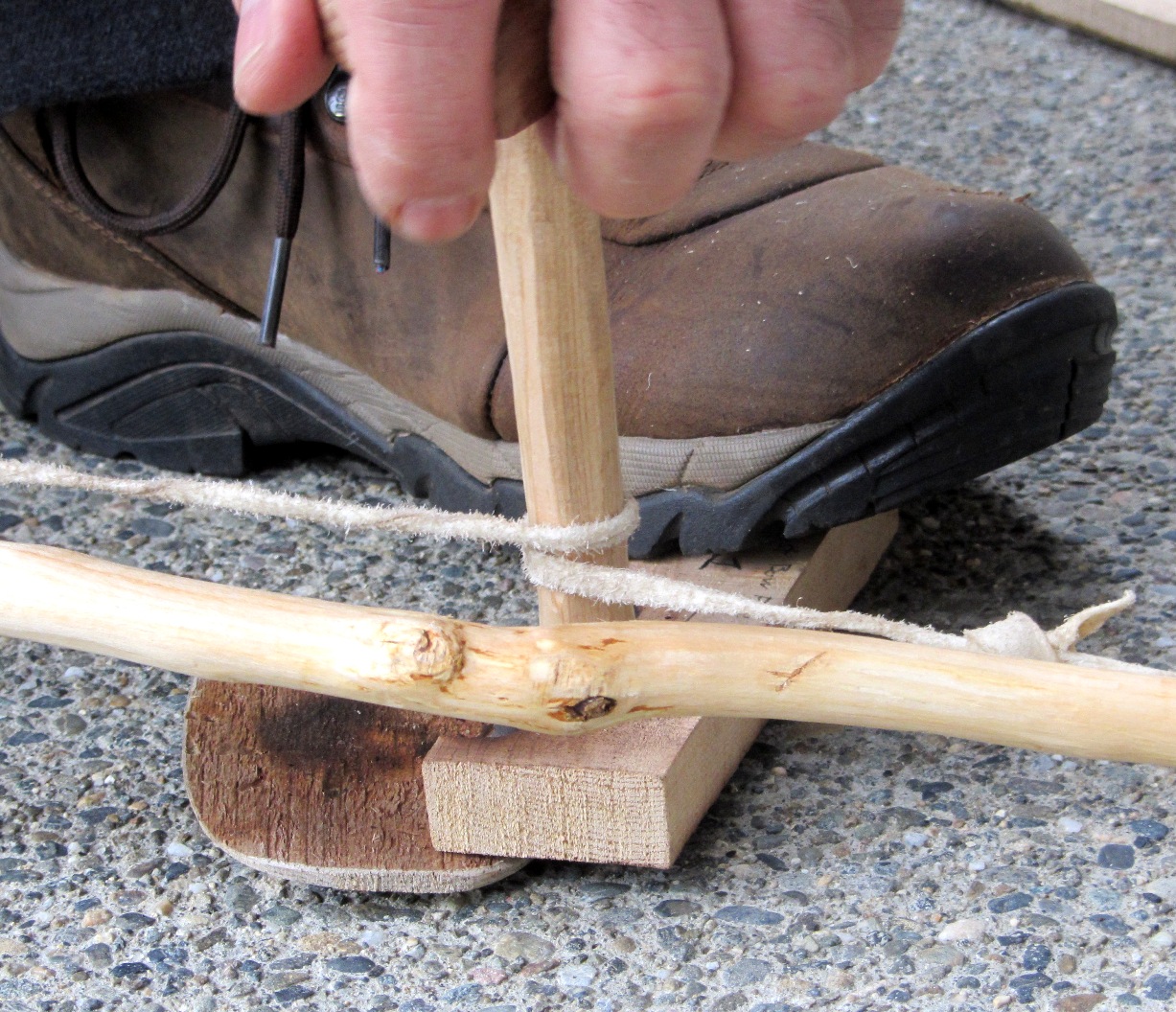
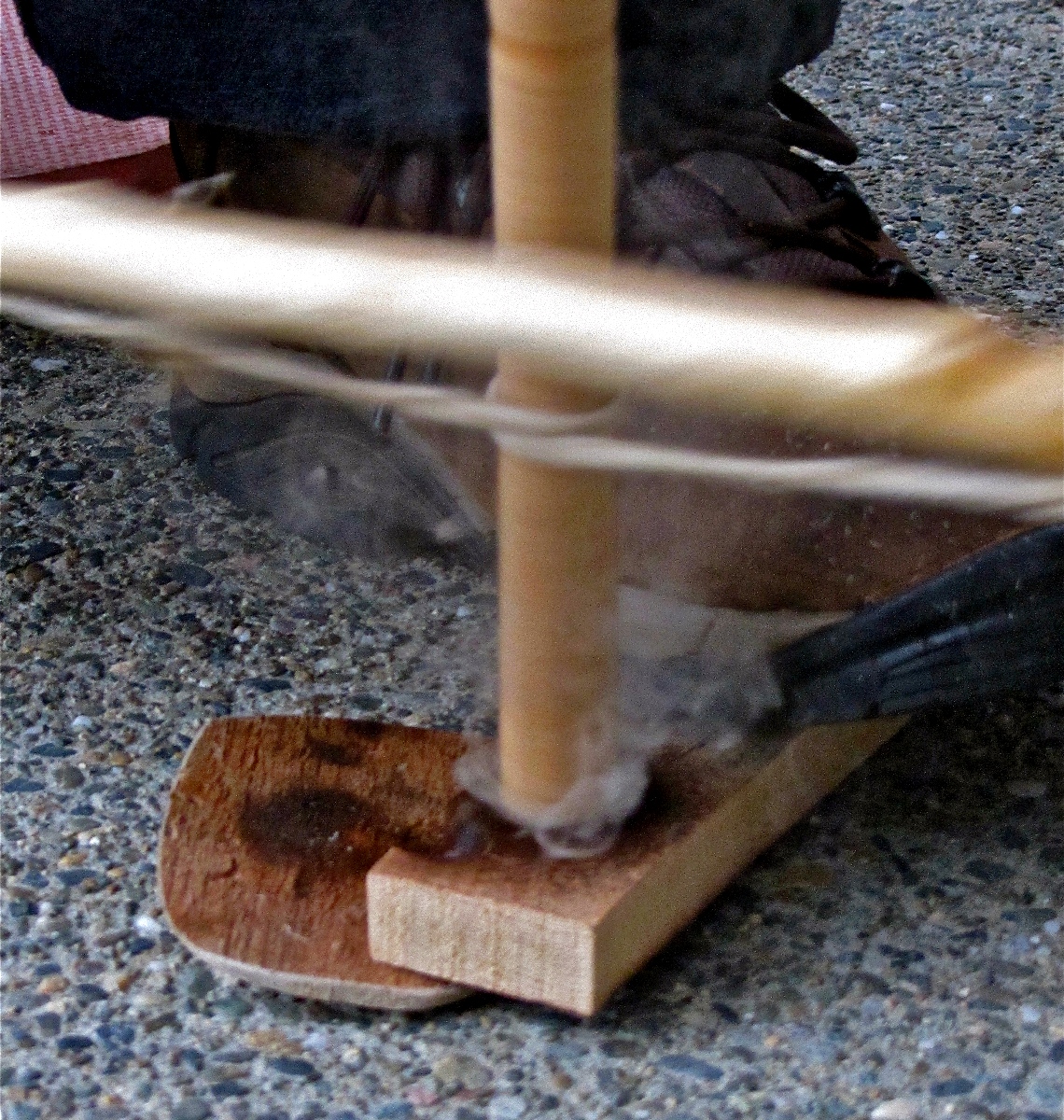
Brace forearm on shin, you should get smoke in 10 seconds go for 50 more seconds.
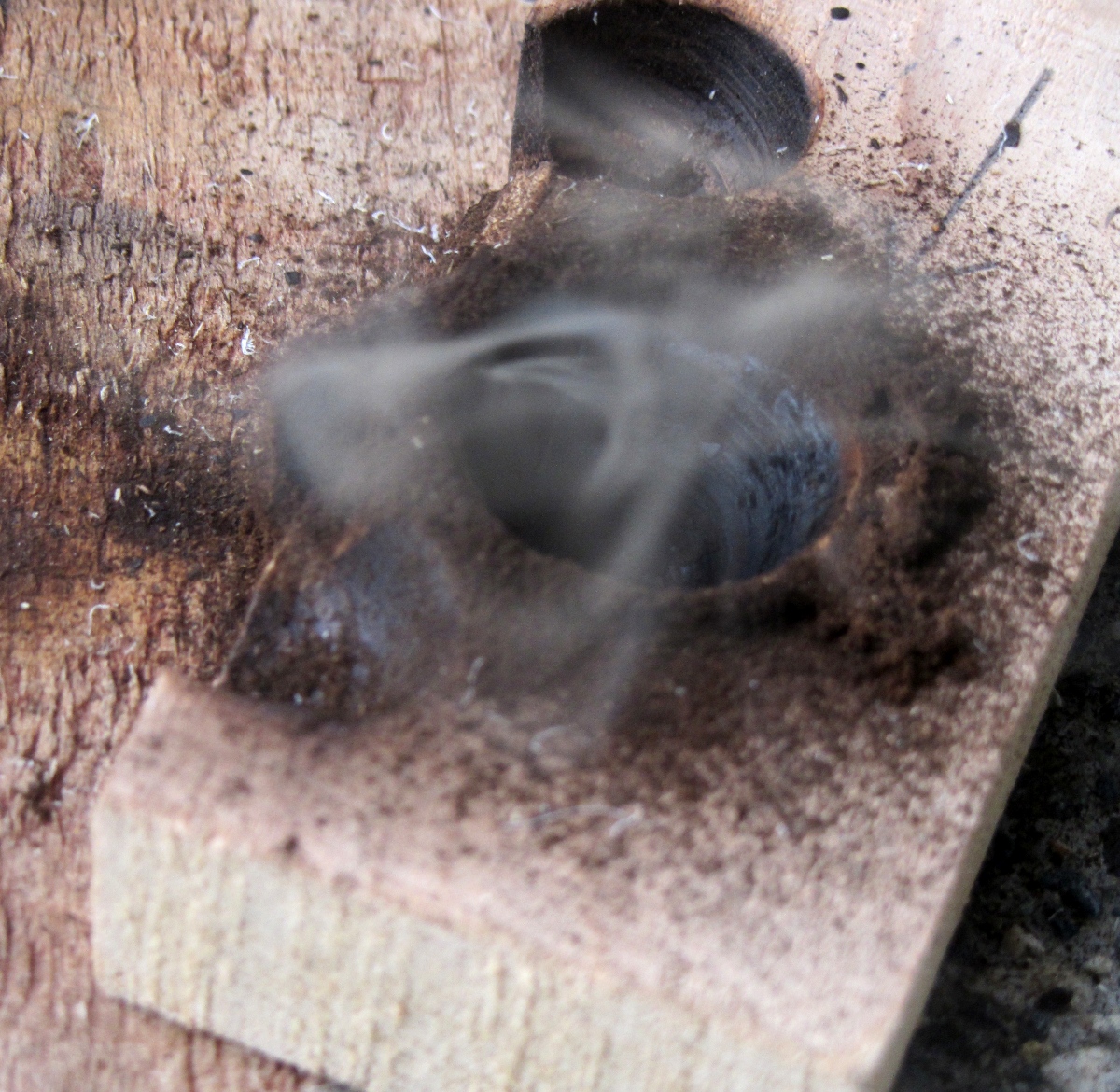
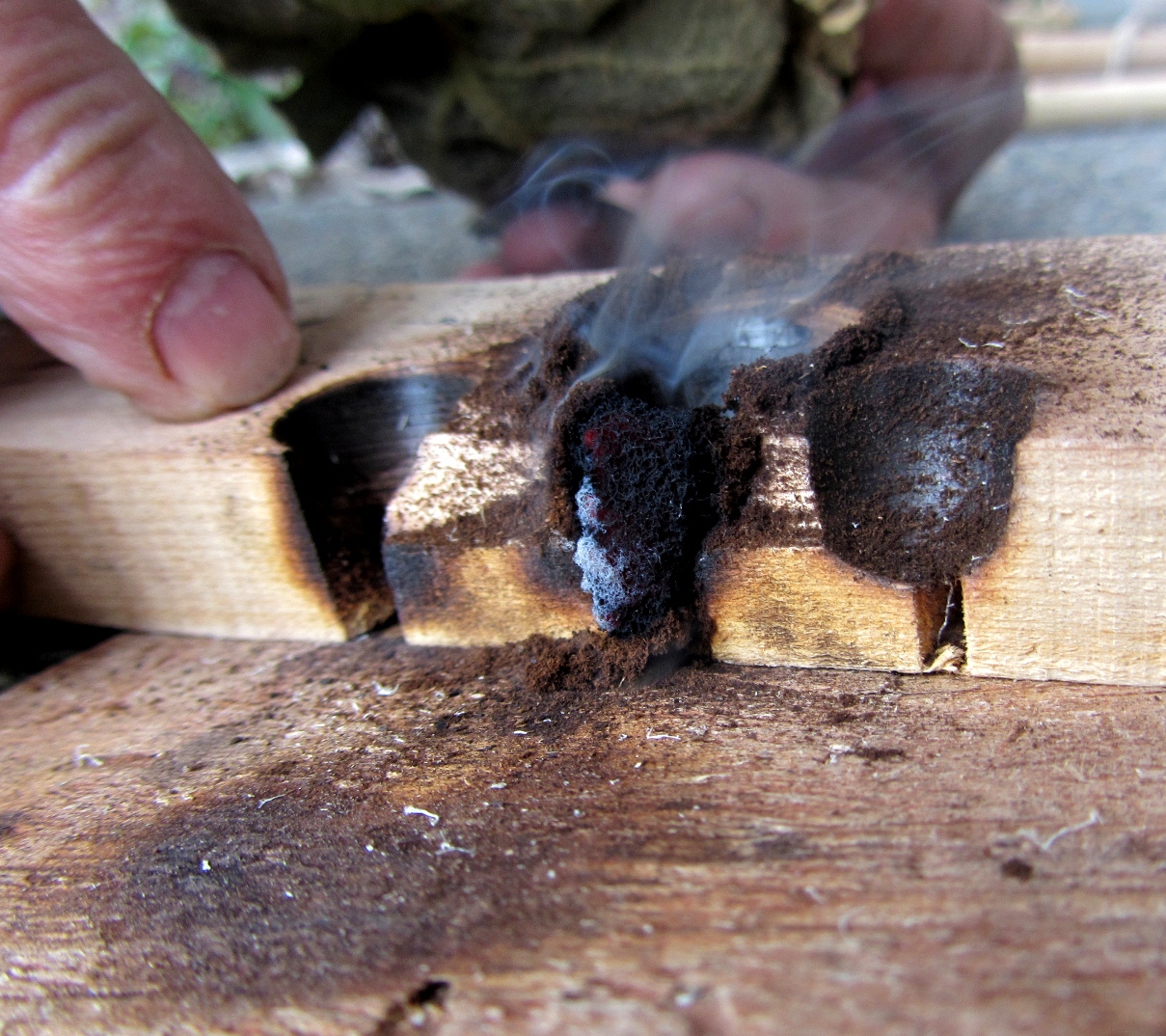
Remove drill and wait the char gets hotter, see the glowing ember.
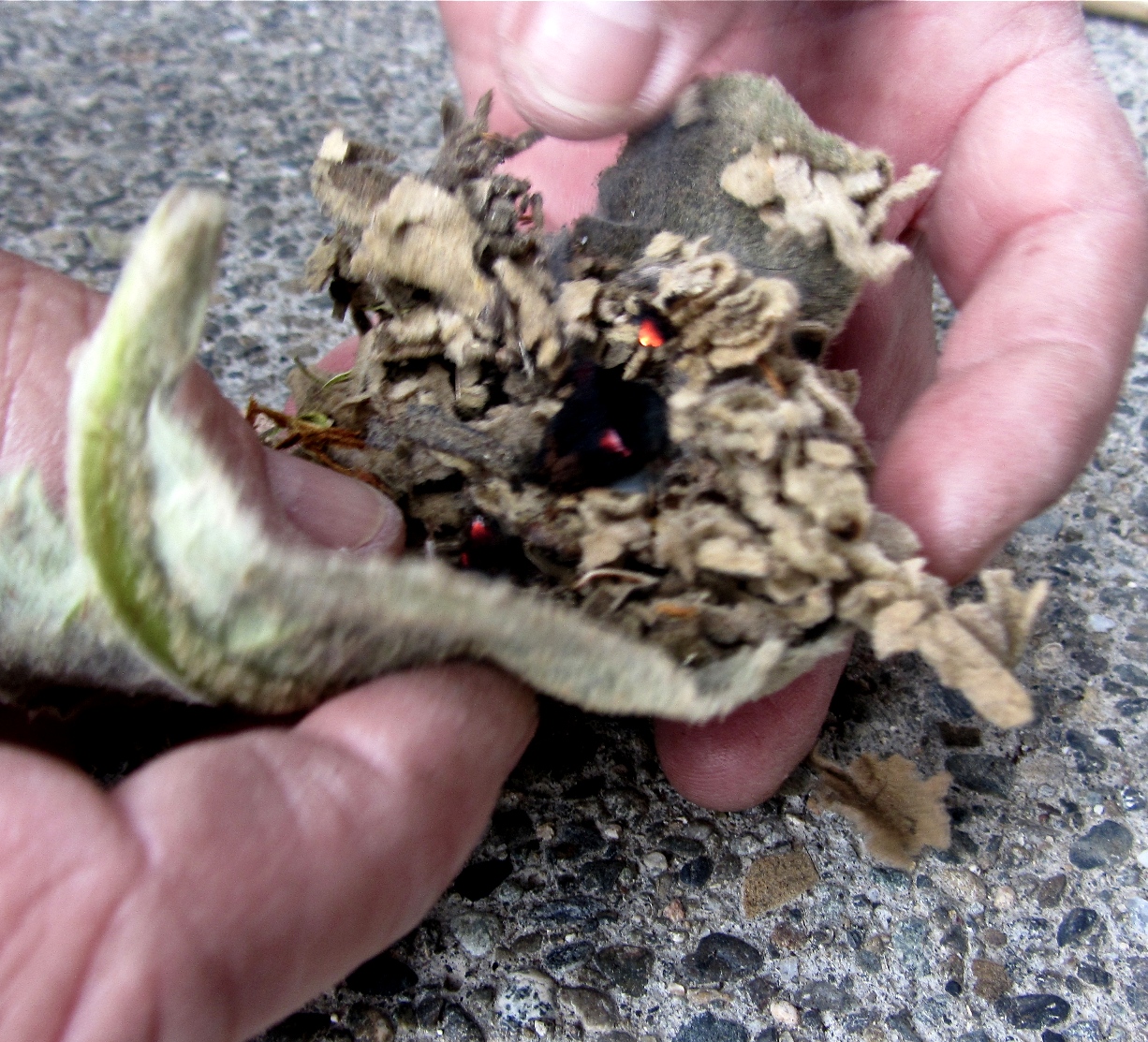
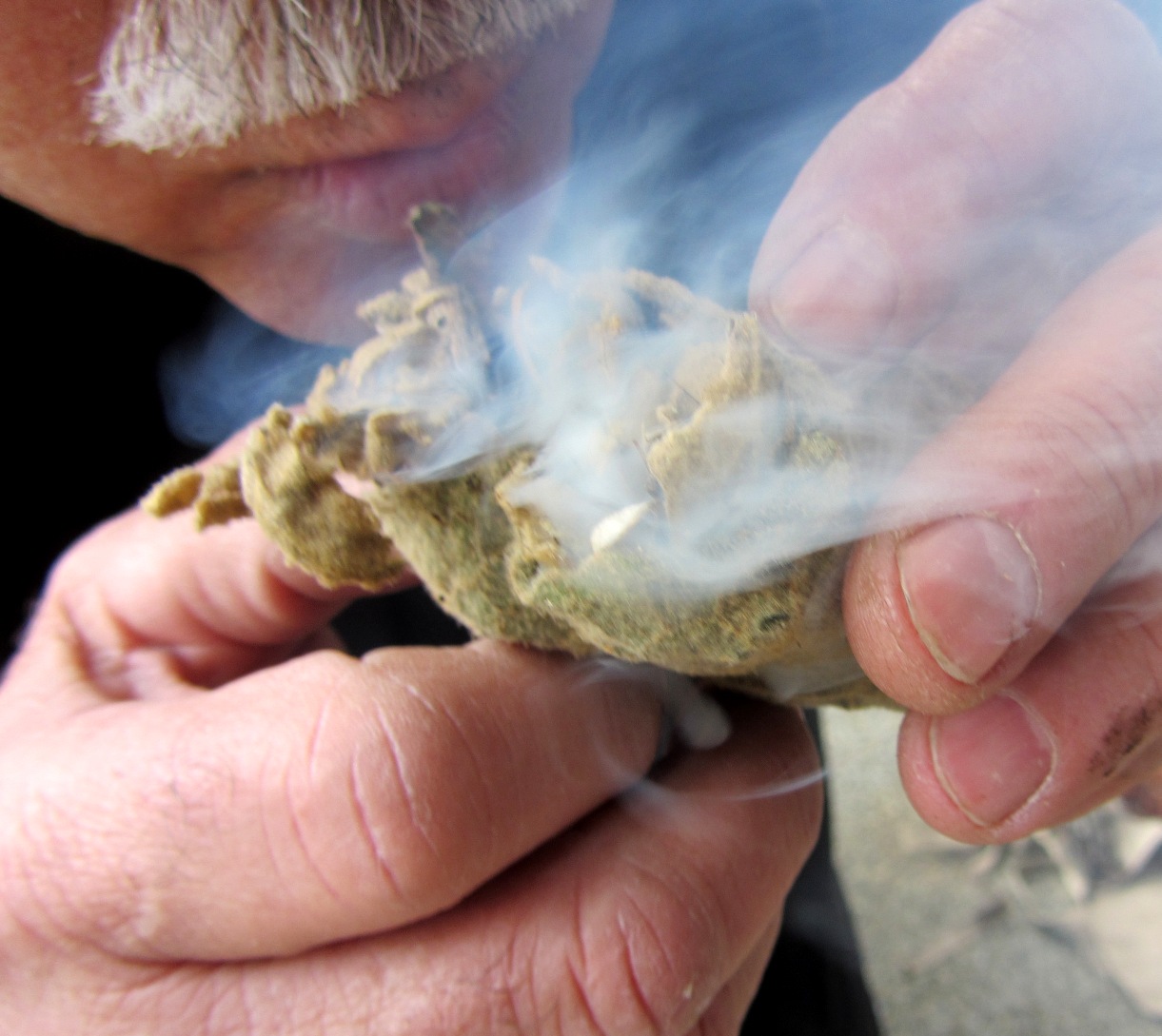
Place in tinder bundle or light polypore first then into bundle and blow.
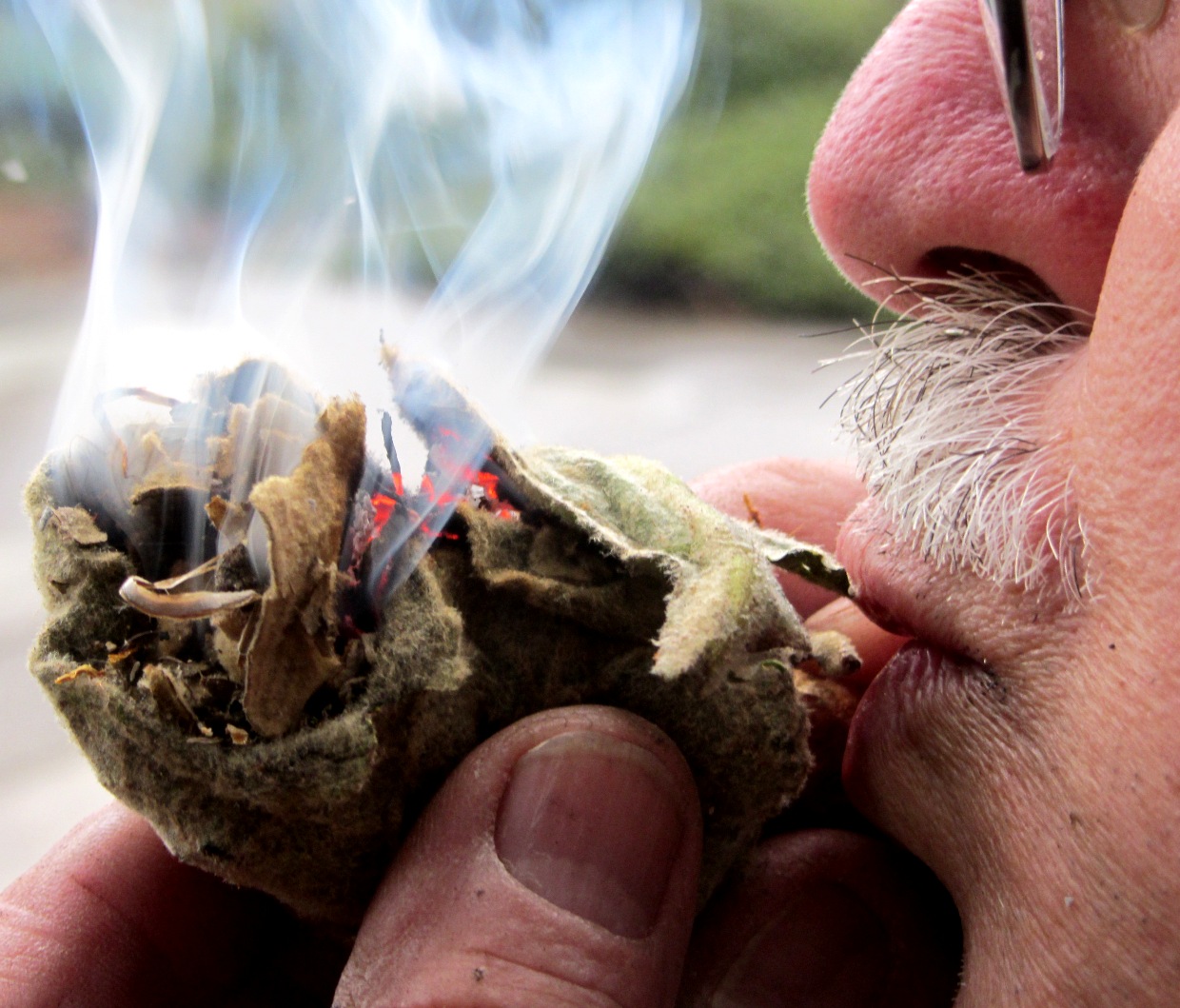
You will hear it change sound just before it burst into flame.
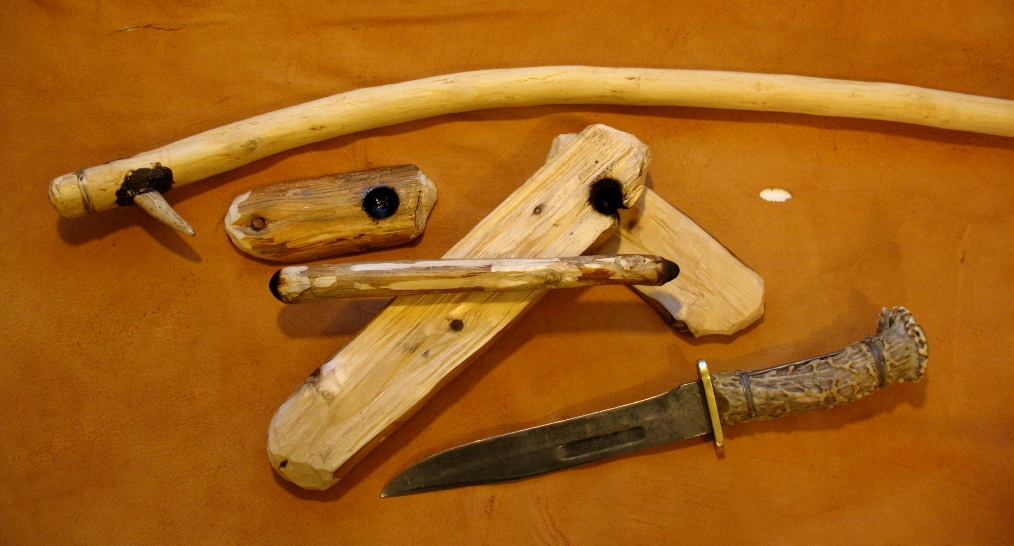
I made this kit with just my knife. Used my atlatl as a bow.
Made fire first time in less than 5 minutes.
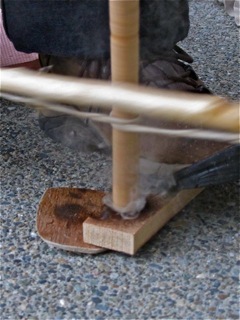
To see the video, click on picture.
Fire Piston
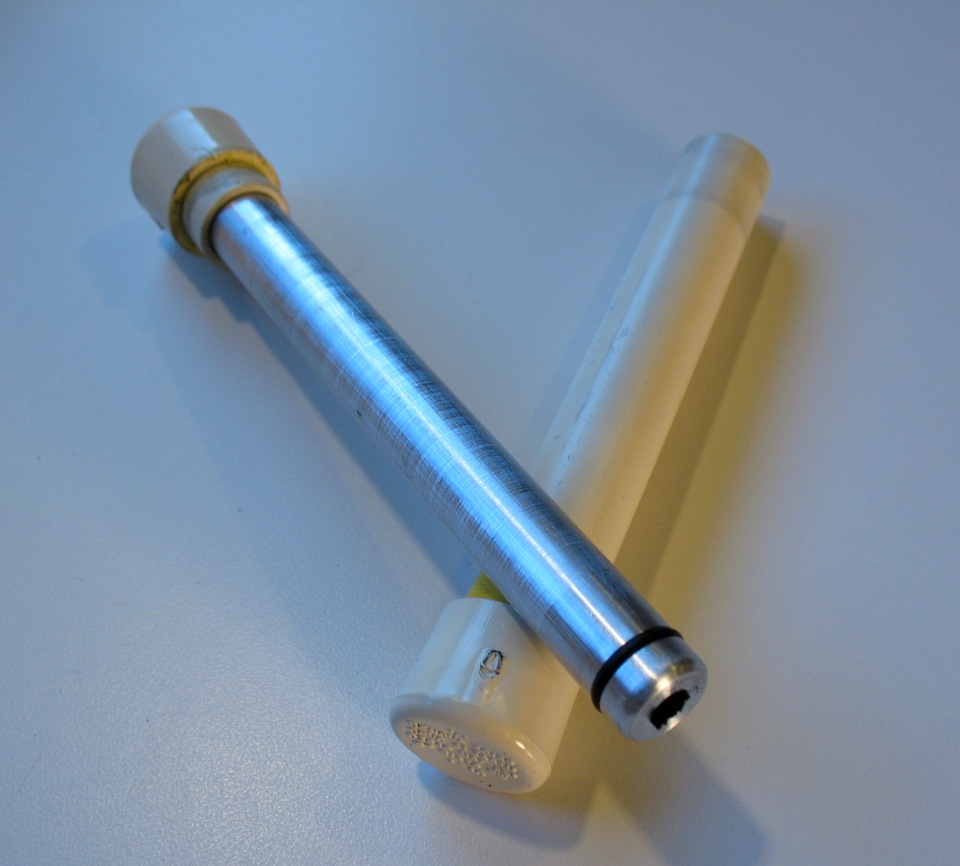
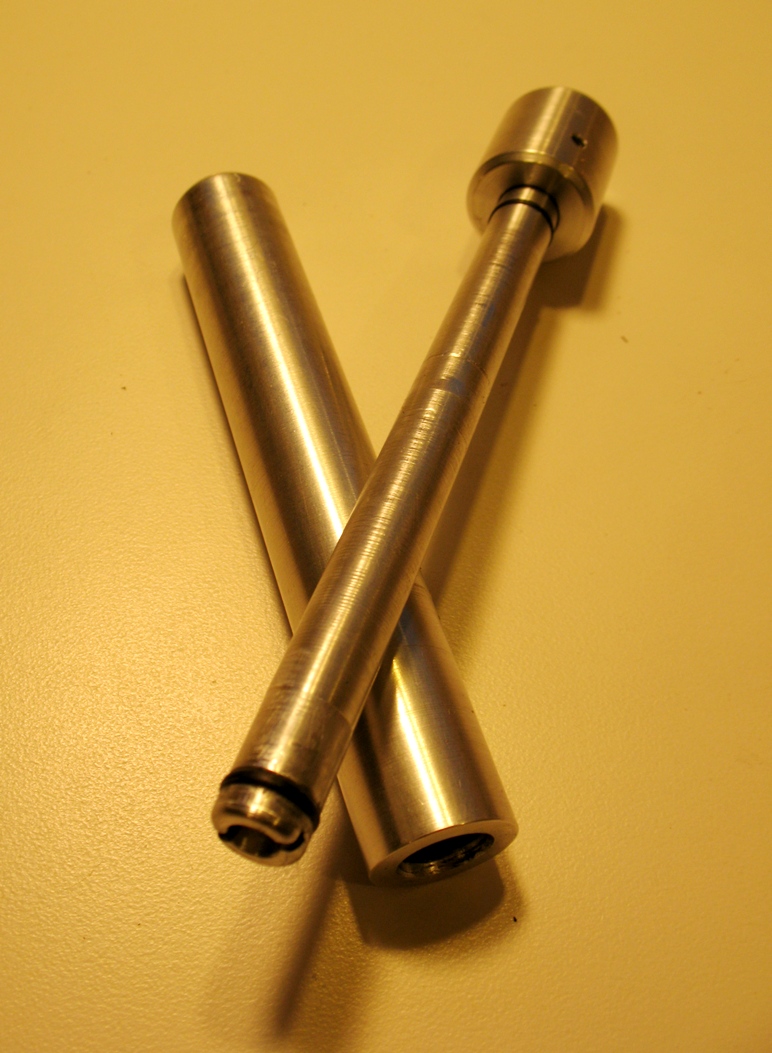
Home made fire pistons can be made out of most materials.
A small piece of char cloth or fungus is placed into the cavity in the end of the rod.
The rod is inserted into the chamber and rammed to the bottom with significant force.
The compression of the air raises the temperature of the air to near 800º this sets aglow
the material in the cup. The small ember is handled carefully to set another tinder aglow.
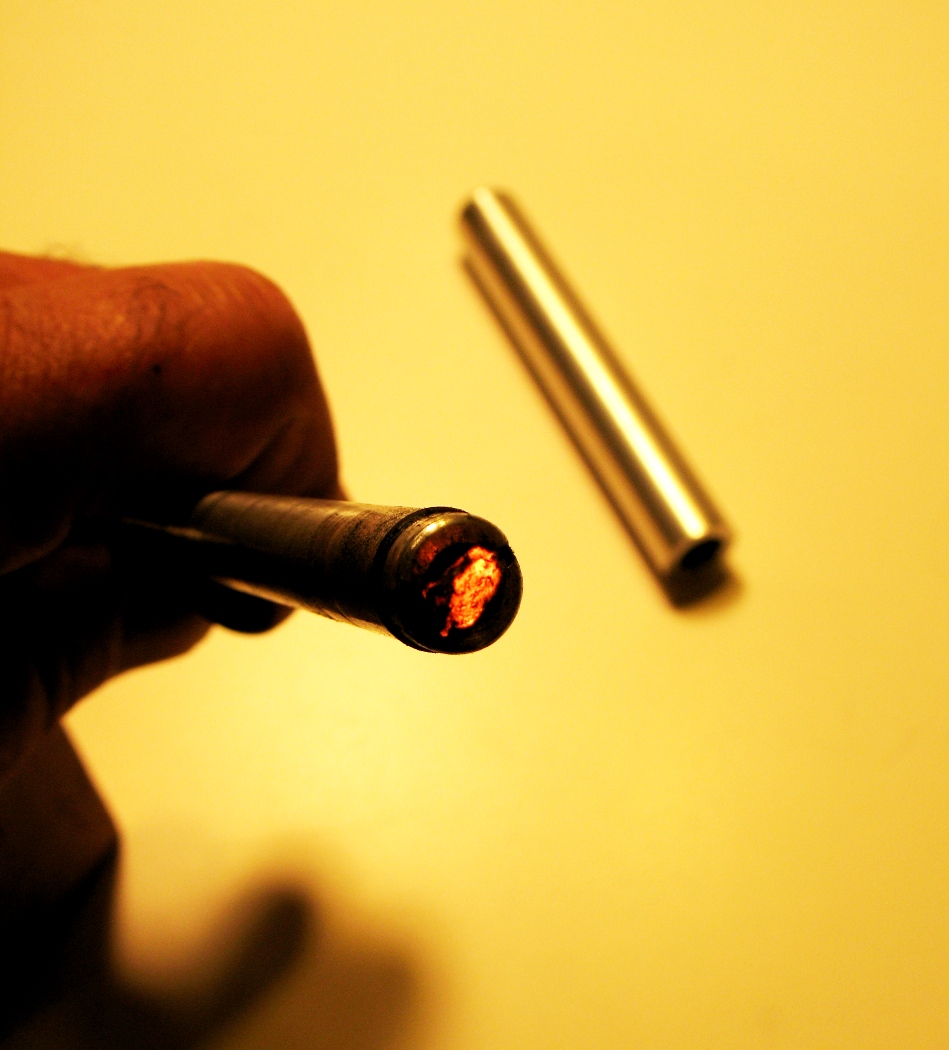
Finding the correct materials to put into the rod is a challenge.
The compression can be achieved by wrapping thread around the rod, instead of an O-ring.
Lubrication is important, helping with friction and seal. Use char cloth to test.
Then find the correct fungus or pithy wood to ignite.
Fire Biscuit
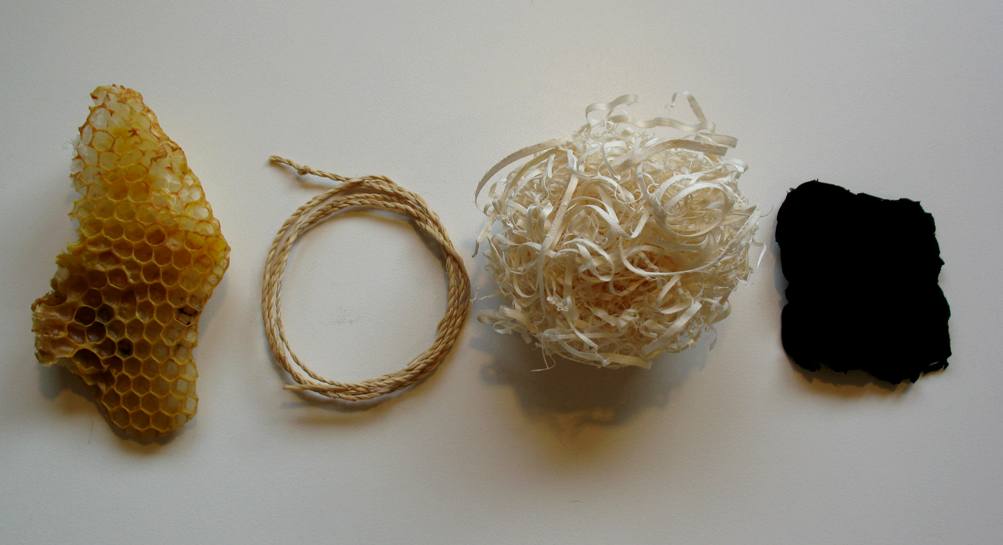
Combine char cloth inside wood shavings rap with cordage and dip in bees wax.
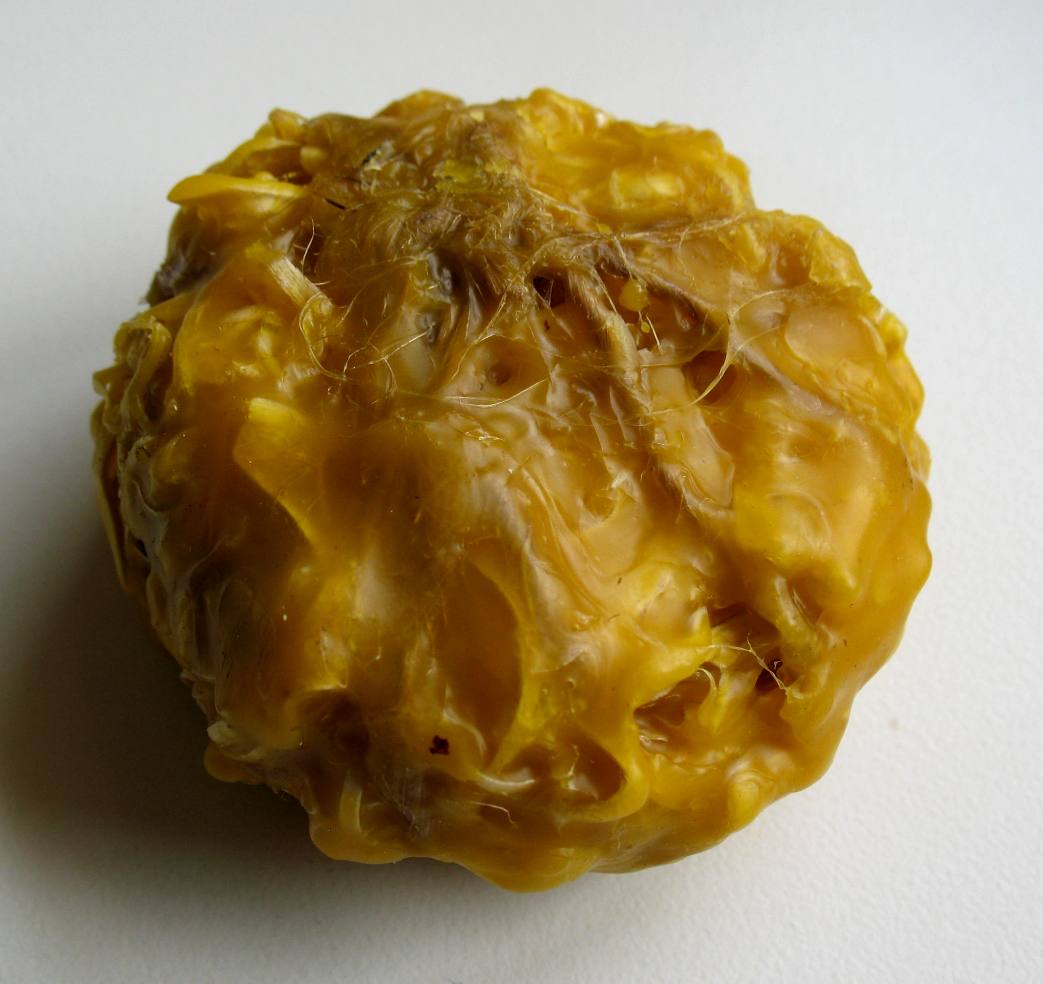
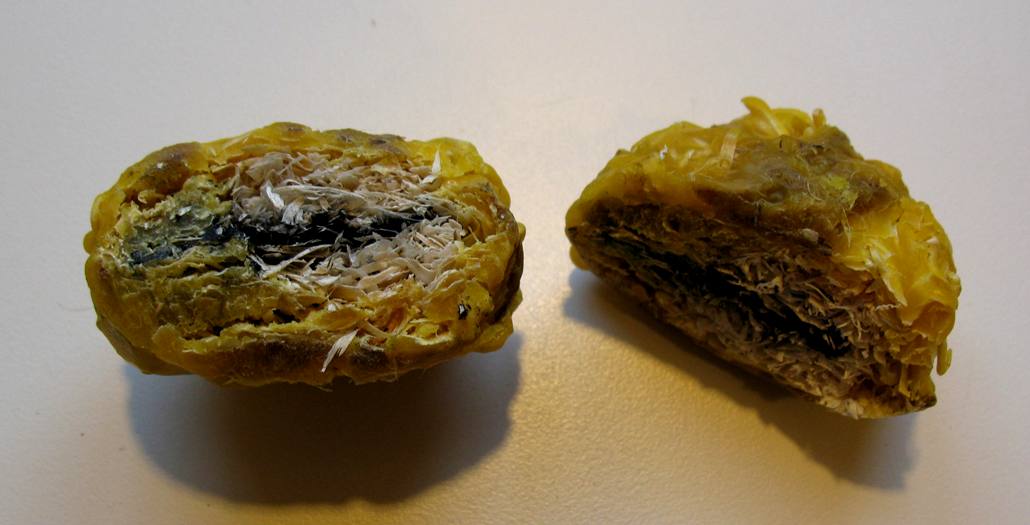
To use cut in half and put spark, ember or fire coal on char cloth in center and blow.
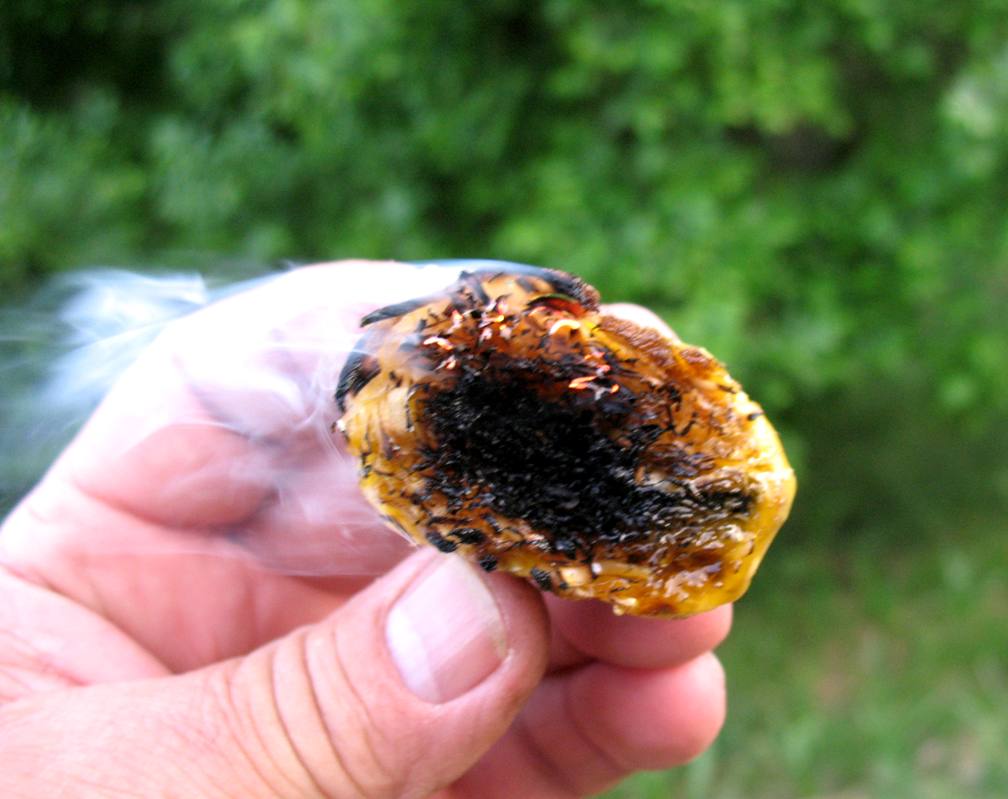
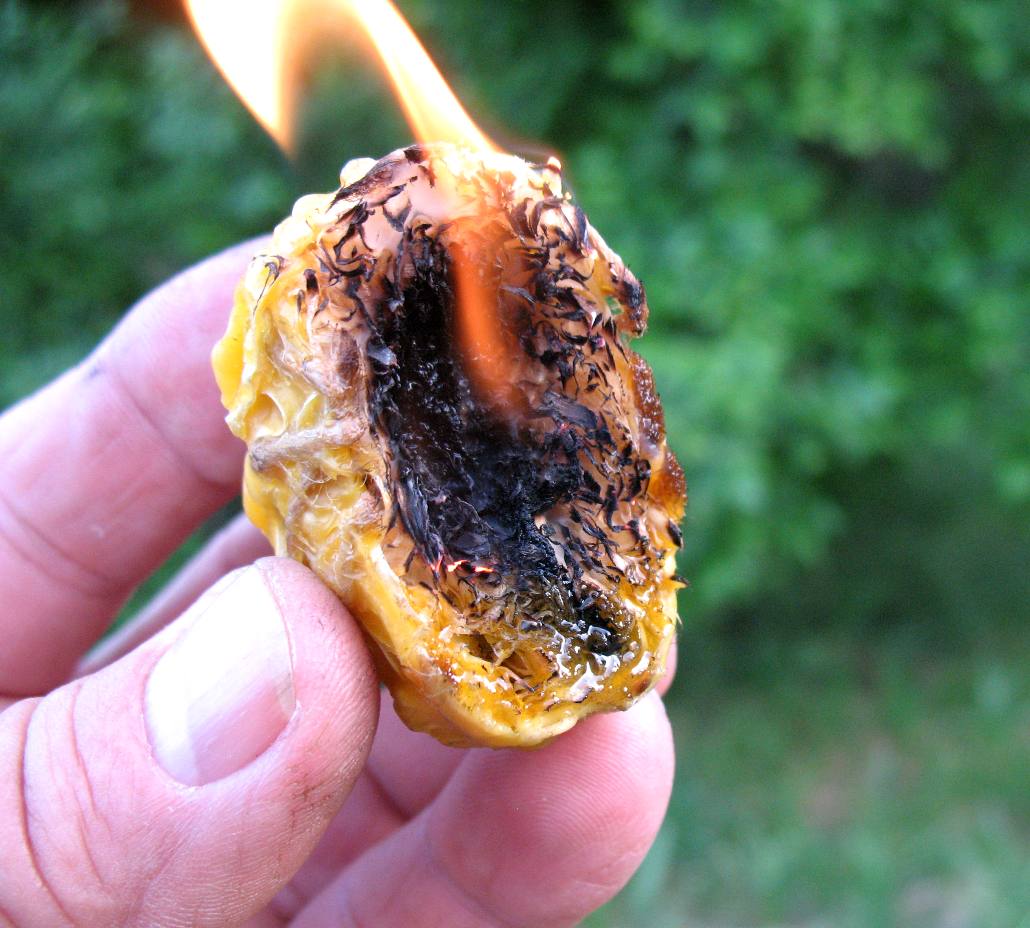
This was a ember from fire piston and blown into flame.